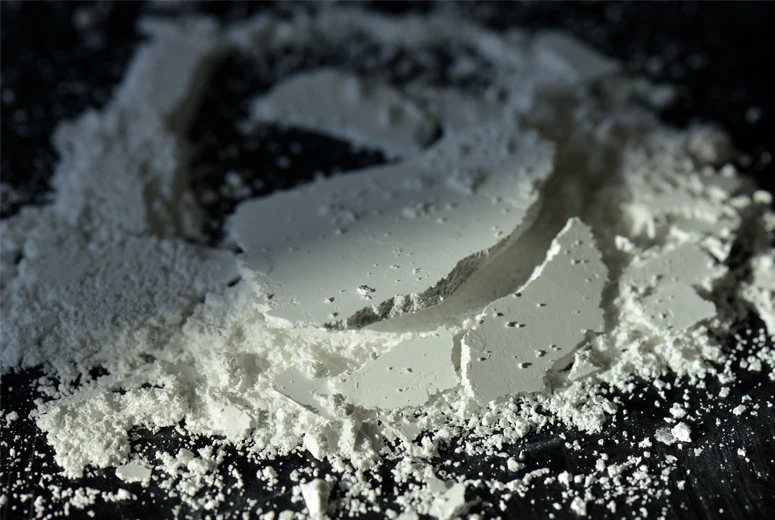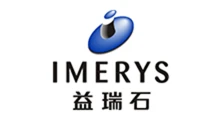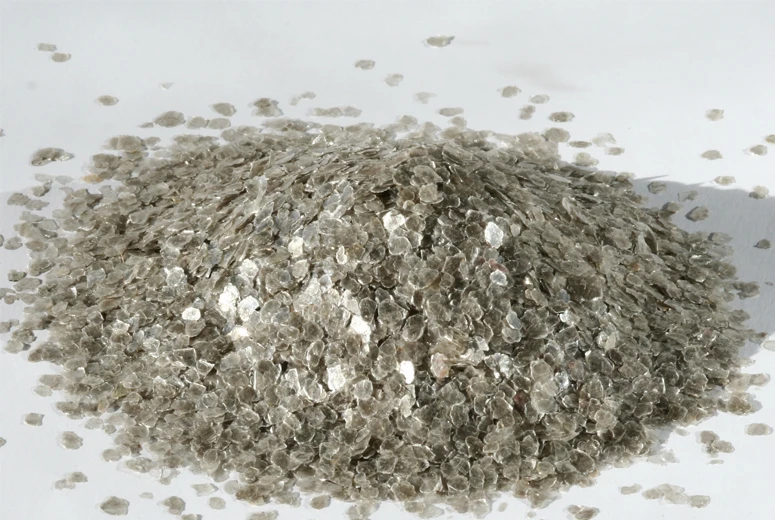high quality mica powder
High quality mica powder, a highly sought-after mineral in various industries, boasts an impressive...
synthetic fluorphlogopite in makeup_synthetic fluorphlogopite in makeup
High quality mica powder, a highly sought-after mineral in various industries, boasts an impressive...
synthetic fluorphlogopite in makeup_synthetic fluorphlogopite in makeup
Mica is a group of silicate minerals that are widely recognized for their unique physical and chemical properties. Composed primarily of silicate layers, mica has a layered structure that allows it to be split into thin sheets. This characteristic, along with its excellent insulating properties, thermal stability, and resistance to chemicals, makes mica a highly valuable material in various industries.
Natural mica powder and synthetic mica powder have differences in production methods, heat resistance and color transparency. As the name suggests, natural mica powder is made from natural mica ore after processing, retaining the original characteristics and composition of the ore. Its main components are SiO2 (about 49%) and Al2O3 (about 30%), while also containing K2O+Na2O (9%-11%) and so on. The synthetic mica powder (such as fluoroglogopicite powder), is the use of a variety of raw materials through high temperature reaction and other chemical methods synthetic, its composition and characteristics can be adjusted and optimized according to the need, the chemical formula is KMg3(AlSi3O10)F2, belongs to the monoclinic crystal system, is a typical layered silicate, relatively single and pure composition. The heat resistance of natural mica powder is generally 500-600℃, and some types, such as phlogopite, can reach 800℃. The heat resistance of synthetic mica powder is more excellent, and it can withstand high temperatures above 1200℃, and the melting point or crystallization temperature is about 1375±5. The transparency of natural mica powder is relatively low, and the color is diverse, including black, yellow, white, gray, green, brown and other colors, and may vary due to different ore types and processing methods. The color of synthetic mica powder is relatively single, usually colorless transparent or white, high whiteness, good optical performance, and high transmittance from ultraviolet to infrared band.
In 2022, Lingshou Huajing Mica Co., Ltd. launched cosmetic grade mica powder. The flake structure of mica powder can lock the water on the surface of the skin, forming a protective film to effectively prevent water loss. Its unique gloss and reflection effect add natural and charming luster to the skin, and mica powder also has a certain sunscreen effect. To a certain extent, it can reduce the damage of ultraviolet rays on the skin, protect the skin from the external environment, and prevent sunburn.
Additionally, edible mica powder is often used in the production of desserts, where it can be dusted over macarons, cupcakes, or even ice creams to provide a magical touch. It can also be mixed into batters for cakes or pancakes to give a shimmering effect throughout the entire dessert. The visual appeal that edible mica powder brings to dishes can increase their desirability and munching experience, engaging all the senses, which is an essential part of the culinary arts.

Additionally, many companies are now offering shimmer mica powder in environmentally friendly packaging, and some are committed to ethical mining practices. This shift reflects a growing awareness among consumers for sustainable sourcing and the importance of making informed choices.
The Importance of Mica Processing Plants in the Mineral Industry
Not only does mica pigment paint offer stunning visual appeal, but it is also durable and versatile. It can be used on a wide range of surfaces, including wood, metal, and even on walls and ceilings. For interior design projects, this type of paint can transform an ordinary space into a luxurious environment, adding a touch of sophistication with minimal effort. Whether you’re looking to create an accent wall or add a shimmering detail to your furniture, mica pigment paint offers endless possibilities for creativity.
In addition, lepidolite and ferrolepidolite can also be used as mineral raw materials for extracting lithium.
In 2022, Lingshou Huajing Mica Co., Ltd. launched cosmetic grade mica powder. The flake structure of mica powder can lock the water on the surface of the skin, forming a protective film to effectively prevent water loss. Its unique gloss and reflection effect add natural and charming luster to the skin, and mica powder also has a certain sunscreen effect. To a certain extent, it can reduce the damage of ultraviolet rays on the skin, protect the skin from the external environment, and prevent sunburn.
An experienced mica manufacturer can offer a variety of customized options, such as different particle sizes, sheet thicknesses, or processed forms, depending on the needs of your project. For example, if you are in the construction industry, you may require mica for its reflective properties in high-performance paints, whereas in the electronics industry, you may need mica with superior insulating qualities. Regardless of the application, working with established mica manufacturers ensures that you receive mica with the specific attributes required for optimal performance.
In the ever-evolving world of cosmetics, lip gloss has maintained its place as a staple in many beauty routines. Its shimmering finish, moisturizing properties, and versatility make it a favorite among makeup enthusiasts. One of the latest trends in lip gloss formulations is the incorporation of mica glitter, a natural mineral that adds a dazzling sparkle and a touch of luxury to your lip products. This article delves into what mica glitter is, why it’s becoming increasingly popular in lip gloss, and how it can enhance your beauty routine.
Mica powder is a versatile mineral used in a wide range of applications, from cosmetics to arts and crafts, and even in industrial settings. Its shimmering, reflective properties, and non-toxic nature make it a popular choice among artisans and manufacturers alike. In this article, we will explore the various uses of mica powder, highlighting its benefits and versatility.

Conclusion
Prominent mica manufacturers comprehend the necessity of balancing innovation with reliability, enabling them to deliver superior products consistently. This stability is pertinent for sectors such as electronics, automotive, and construction, where high-quality mica is indispensable. For instance, in the electronics industry, mica's dielectric and thermal properties are crucial in producing capacitors and insulators that perform under rigorous conditions.
The Versatile Uses of Mica Pigment Powder
In addition, lepidolite and ferrolepidolite can also be used as mineral raw materials for extracting lithium.
What Can You Use Mica Powder For?
4. Lowering Processing Costs Mica powder can also contribute to more efficient manufacturing processes. Its unique structure can help reduce the viscosity of plastic formulations, making them easier to work with during production. This can lead to decreased energy consumption and lower overall production costs.
In the world of industrial manufacturing, the mica factory stands out as a cornerstone for various sectors, providing essential components that contribute to the efficiency and effectiveness of numerous products. As someone who has meticulously observed the operations and performance of mica factories over the years, I can share insights that not only highlight their significance but also demystify the intricate processes that ensure their output meets global standards.

Quality control is essential in mica powder production. Factories test their products for contaminants and ensure that they comply with industry regulations, particularly in cosmetics where safety is paramount. This involves rigorous testing methods, including analysis for heavy metals and other harmful substances. By adhering to these strict guidelines, mica powder factories can guarantee that their products are safe for consumer use.

The Benefits of Mica Makeup
The common characteristics of mica group minerals are: layered silicate minerals, monoclinic crystal system, a few trigonal crystal system, the crystals are pseudo-hexagonal columnar, plate and sheet; The aggregate is scaly and foliaceous. It has a set of extremely complete cleavage, along which it is easy to peel into sheets. Therefore, the shape of mica is usually regarded as sheet.
In short, there are significant differences between natural mica powder and synthetic mica powder in production methods, color and appearance, performance characteristics, application fields, and price and cost. Synthetic mica powder is superior to natural mica powder in terms of high temperature resistance, transparency, electrical insulation, stability and mechanical properties, while natural mica powder has more advantages in resource acquisition, cost and color. When choosing which type of mica powder to use, you can consider the high temperature resistance of the required material, electrical insulation performance, transparency and color requirements, evaluate the mechanical strength and hardness of the required material, consider chemical stability and other different application scenarios and technical requirements to make a reasonable choice.
3. Improved Mechanical Properties The inclusion of mica chips in concrete can enhance its mechanical properties. Mica's layered structure can contribute to the composite nature of concrete, providing additional bonding strength and flexibility. This can result in concrete that is not only stronger but also more resistant to impact and stress.

When deciding between natural and synthetic mica, it is essential to weigh the specific needs of the application and consider factors such as ethical sourcing, cost, and desired properties. Natural mica excels in aesthetic appeal and has a long-standing reputation in various industries, yet the ethical considerations cannot be overlooked. On the other hand, synthetic mica presents a responsible alternative without compromising on functionality, particularly in applications where consistency and purity are crucial.
2. Mixing The pearl pigment powder is mixed with a clear basecoat or color paint, allowing the unique properties of the pigments to shine through.
Synthetic mica, also referred to as artificial mica or engineered mica, is produced using synthetic methods that mimic the geological processes which create natural mica. It is typically made from materials like silicates, and unlike natural mica, its production can be regulated to ensure purity and consistency in quality. This precision allows manufacturers to tailor the properties of synthetic mica to suit specific needs, resulting in a material that can outperform its natural counterpart in many respects.
Later, with the development of science and technology, people gradually realized that mica minerals have high insulation, high temperature resistance, strong acid and alkali resistance, and mica also began to enter building materials, fire, plastics, paper, rubber, pearlite pigments and other industries. These are mainly Muscovite and phlogopite.
Mica pigment paint can be used on walls, ceilings, furniture, or decorative accessories, making it a versatile addition to any interior design project. Its wide range of colors, from soft iridescent hues to bold metallic shades, allows designers to create customized effects that complement a variety of design styles, from modern minimalism to traditional elegance. Whether you’re aiming for a subtle glow or a bold statement, mica pigment paint adds visual interest and texture to your space.